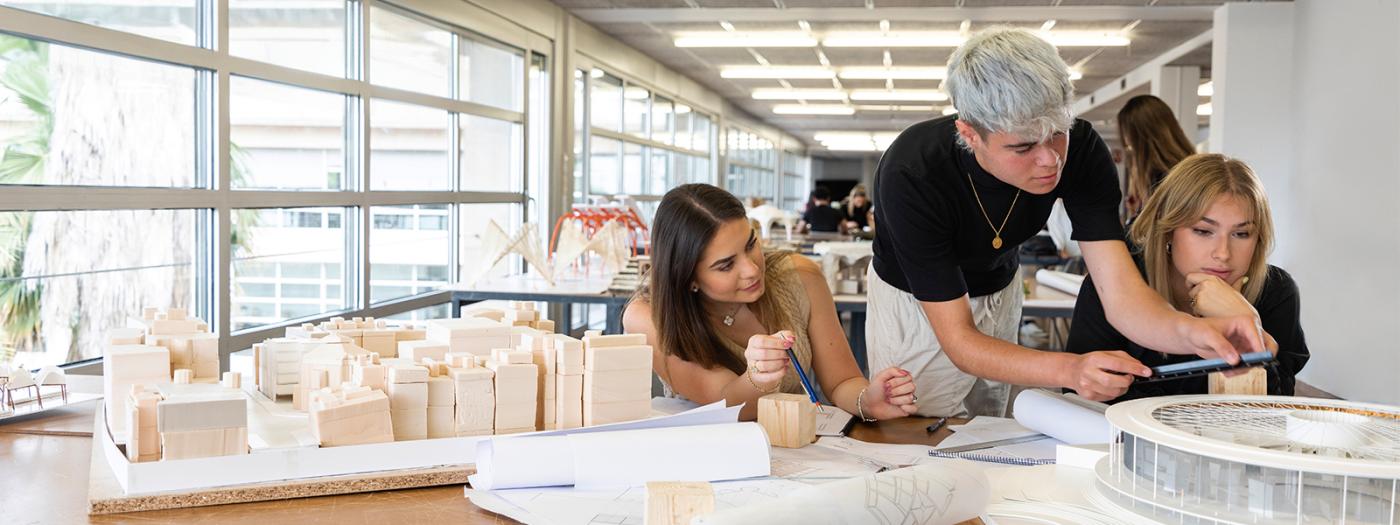Code: YY067
Type: Optative
Impartition: Biannual (semester)
ECTS credits: 3
Architectural design and projection, construction, facilities.
To provide students with the basic principles of human-centered design, which integrates physical, emotional and cognitive health and well-being. Through disciplines such as neurosciences applied to architecture, healthy architecture and bioconstruction, students will be provided with knowledge on how to design spaces that care for people.
Wellness and Health Architecture Knowledge Base
- What is health, what do we understand by well-being, and what environmental variables modulate it from a broad, integrative perspective based on scientific evidence
- Reference models that allow us to understand and structure this environmental impact on health: the salutogenic model and the exposome
- Classification of the different environmental factors involved in health, to identify those on which we can influence from the architectural and construction design, as well as the facilities and services:
o Air quality
o Chronobiological lighting
o Acoustic comfort
o Healthy air conditioning and ventilation systems
o materials and finishes that avoid chemical contaminants and contribute to indoor environmental quality
o Reduction of exposure to electromagnetic radiation
- Basic bibliography of neurosciences applied to architecture.
- Provision of criteria and tools to interpret scientific research and apply it to professional practice
- Evaluation of specific environmental parameters:
o What is its relationship with physical, emotional and cognitive health.
o How we can measure, model or anticipate them in the project.
o How they are integrated into the construction design of a building or public space.
o With what materials, technologies or architectural strategies can we act.
Each topic will be accompanied by case studies, analysis of scientific evidence, and practical exercises that allow this knowledge to be transferred to the real context of the architectural project.
Continuous assessment based on:
Theoretical classes
Lectures
Individual practical exercises
Group practical exercises
Rehabilitación y reformas con criterios de salud. Cambra de la Propietat Urbana de Barcelona, 2023.
Ros, Juan Manuel. Arquitectura biosaludable. Ed. Asimétricas
Prieto, Eduardo. Historia medioambiental de la arquitectura. Ed. Cátedra
Zajonc, Arthur. Capturar la luz. Ed. Siruela
Silvestre, Elisabet. Tu casa sin tóxicos. Ed RBA
Silvestre, Elisabet. Tu casa sana. Ed RBA
Pallasmaa, Juhani i altres. Architecture and empathy
Pallasmaa, Juhani i altres. Architecture and neuroscience
Hall, Stephen. Cuestiones de percepción. Fenomenología de la arquitectura. Ed GG
Castellanos, Nazaret. Neurociencia del cuerpo. Ed Kairós
Damasio, Antonio. El error de descartes. La emoción, la razón y el cerebro humano Ed. Booket ciencia
Muxí, Zaida. Mujeres, casas y ciudades.
Silvestre, Elisabet. La oficina en casa. Ed RBA
Castellanos, Nazaret. El espejo del cerebro. Ed ensayo
Carson, Rachel. La primavera silenciosa.
Meadows, Donella i Dennis; Randers, Jorgen. Los límites del crecimiento. Ed. Galaxia Gutenberg
Bordera, Juan; Turiel, Antonio; Valladares, Fernando. ¿El final de las estaciones? Razones para el decrecimiento y para la rebelión de la ciencia.
Damasio, Antonio. El extraño orden de las cosas: La vida, los sentimientos y la creación de las cultures. Ed. Booket ciencia
